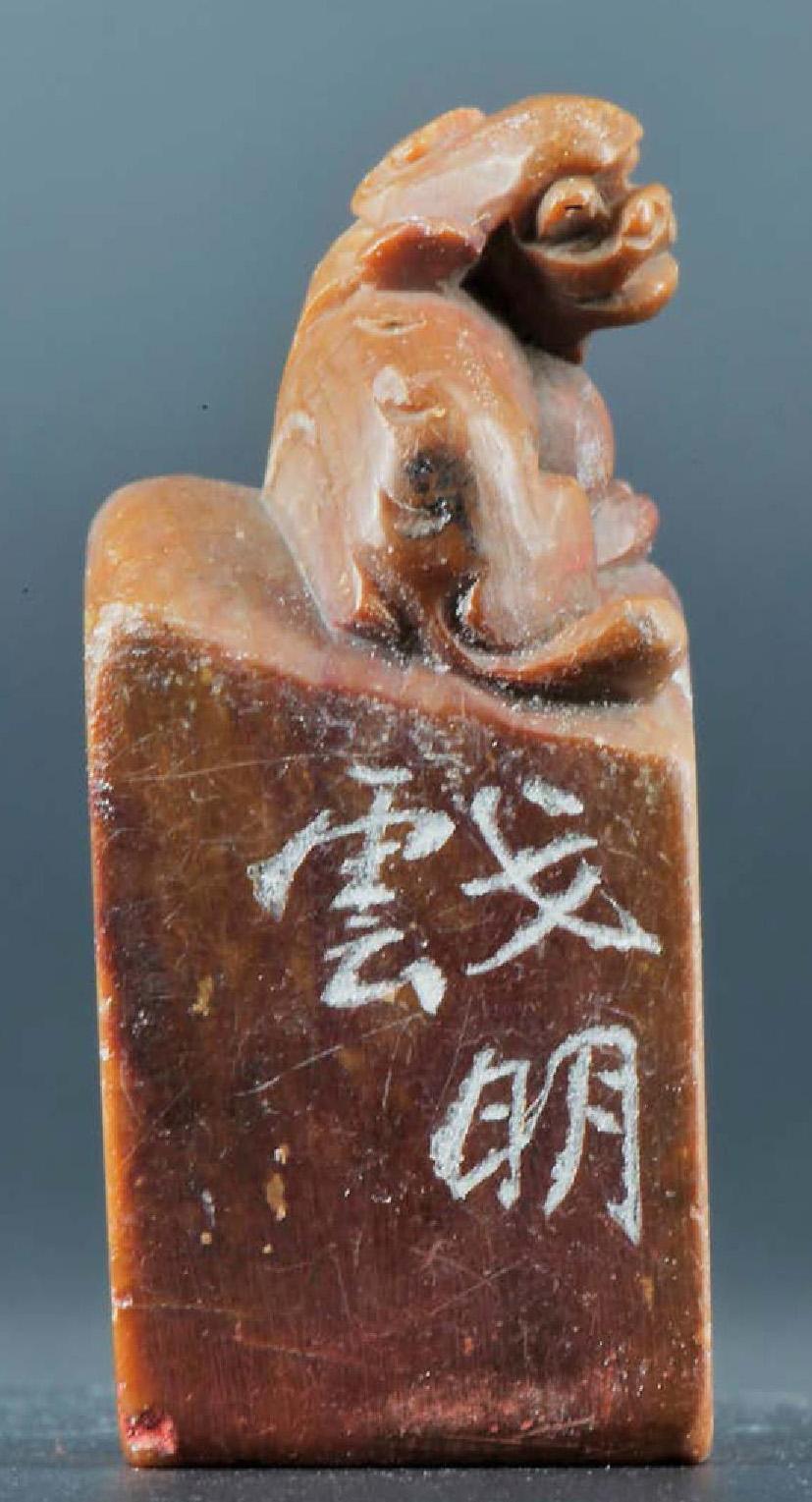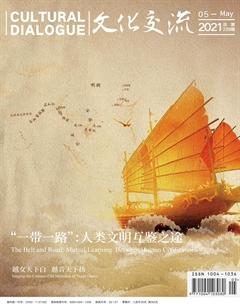弘一大師“印藏”軼事
申儉

弘一大師出家前名李叔同,1880年10月出生于天津桐達李家,1942年10月圓寂于福建泉州。李叔同“二十文章驚海內”,是那個時代最有才華的天才之一,中國新文化運動先驅者。早年將西方油畫、鋼琴、話劇等引入國內,且以擅書法、工詩詞、通丹青、達音律、精金石、善演藝而馳名于世,是才氣橫溢的藝術教育家。1912年他到浙江兩級師范學校任教后,于1914年加入西泠印社,1918年農歷七月十三日,李叔同在西泠印社創始人之一葉為銘推薦下,由虎跑寺大護法、西泠印社創始人之一丁輔之介紹,披剃于虎跑寺,取名演音,法號弘一,成為一代高僧。
李叔同出家前夕,把所用印章贈予西泠印社。為此,葉為銘仿昔人“詩冢”“書藏”遺意,在孤山鴻雪徑的石壁上開鑿庋藏,外覆尺余見方的石碑,鐫陰文小篆“印藏”二字,六行隸書跋文記述了“印藏”的深意,“庶與湖山并永”。
1963年,西泠印社六秩慶祝前夕,印社同人恐印藏壁龕年久泐損,特起出94方印章作為文物收藏。這些印章,印文內容均系李叔同的姓氏、別號、齋號,為他本人的常用印,既有西泠印社社友、吳昌碩的著名弟子、樂石社師生所刻,也有一些不甚為人熟知的篆刻家,其中一方編號1769的文物藏品印章,還長期被誤讀為“戈明云”,并多次出版。隨著對“印藏”內容的研究深入,這些沉默的印章為我們展現了“印藏”視角下李叔同藝文交游圈,其中與演說家戈朋云的藝文交往鉤沉出史海,也為浙江在中國對外文化交流史的領先地位添上濃重一筆。
戈朋云(1867—1927),名戈忠,字鵬云,一字朋云,以字行,別字伯虎,別署恒壽堂戈,父親戈鯤化(1836-1882)為哈佛大學第一位中國教授,母親戈葉氏系滿族,安徽休寧人,出生于浙江省寧波府鄞縣天封橋莫子喜東巷人壽堂。
戈朋云的父親戈鯤化是近現代中國對外文化交流中的先驅者。出版《人壽堂詩鈔》和《人壽集》兩部著作,在當時中國文化圈中頗有名氣。清光緒五年(1879年),由他在寧波口岸任職稅務司官員的中文學生、畢業于哈佛大學的美國人杜德維推薦,于5月26日在上海與美國哈佛大學簽訂赴美任教3年(1879年9月1日至1882年8月31日)的合同,每月束修洋錢貳百元正。當年8月底,戈鯤化攜帶家眷和一大批中國書籍抵達哈佛大學,1879年10月22日正式開課,成為第一位被哈佛大學聘為中文教授的中國學者。戈鯤化赴美執教的時間雖然只有短短3年,然而由于他的敬業和才能,在中美文化交流史上依然創造出三個“第一”的紀錄:登上哈佛講臺的中國第一人,編撰出第一部由中國人為西方人寫的中國文化教材,為哈佛大學燕京圖書館的第一批圖書來源提供基奠。目前燕京圖書館為西方世界收藏中國典籍最多、藏書價值最大的東亞圖書館,圖書館內左側墻上懸掛著戈鯤化的兩張照片,供人瞻仰。
1879年,12歲的戈朋云隨父赴美,青少年時期受過很好的西學教育,在波士頓就學期間幫助抄寫由父親編寫的《華質英文》。1882年其父去世以后,回國到上海入讀教會學校中西書院,1883年留學哈佛大學。1899年經天津入京赴任京師大學堂英文副教習,同年因其母在上海去世辭職返滬丁憂。戈朋云回滬后創辦銀爐業,專事為鹽業銀行熔煉碎銀,1899年9月18日在上海英租界大馬路逢吉里創辦中英學社。
1898年10月,李叔同與母親、妻子一起南下來到上海,加入城南文社,1899年與許幻園、袁希濂、周炳城等結為金蘭,號為“天涯五友”,在周炳城、袁希濂的幫助下,找到李氏族人在天津時結識的昔日好友戈朋云,據說當時在中英學社補習半年多英語。戈朋云在天津時曾得到李氏族人的周全照顧,因此戈朋云為李叔同篆刻了這方“當湖息霜”白文壽山石印章,以示感謝。
此印印面為2公分見方,高4.7cm,邊款僅為“戈朋云”。由于朋字左邊的筆畫勾連,西泠印社當時手中并無任何“印藏”的歷史資料信息,賬冊登記時按照常規“戈明云”識讀至今。此邊款的筆意瀟灑流暢,書寫習慣和筆跡與戈朋云現存的書畫作品相同,從戈朋云現存書畫作品簽名便可見其一致性,可充分印證為戈朋云邊款。
李叔同顯然很喜歡此方印章,即在同年由上海致天津管家徐耀庭信封正面上鈐印,又在1899年蘇體行書《王次回平江孝儀看燈詞》上鈐蓋(此二件天津博物館藏)。
Born Li Shutong in October 1880 in Tianjin, Master Hongyi was one of the most talented painters, dramatists, calligraphers, musicians, seal cutters and poets. As a pioneer of Chinas New Culture Movement, Li taught at Zhejiang Secondary Normal School (predecessor of the Hangzhou High School) in 1912, before joining the Xiling Seal Art Society in 1914. It is during his stay at the society that Li was introduced to the Hupao Temple and ordained as a Buddhist monk on the thirteenth day of the seventh month in the lunar calendar in 1918.
Shortly before Li became a monk, he donated the entire collection of his seals to the Xiling Seal Art Society. In line with traditions, Ye Weiming, one of the founders of the society, specially carved a niche on the stonewall along the Hongxue Path on the Solitary Hill, and put the seals in the niche. Covering the niche was a small stone tablet on which two characters “Yin Cang” (literally Seal Collection) in xiaozhuan were engraved; beside were six lines of postscript written in lishu, explaining the purpose of the collection: “May [the seals] stay with the lake and the hill forever”.
In 1963, on the eve of the 60th anniversary of Xiling Seal Arts Society, 94 seals from the collection were pulled out in case they might suffer damage after long years in storage. They were among those seals regularly used by Li Shutong. Some of them were cut by established seal masters, and a few by lesser-known engravers, one of which, numbered “1769”, had long been misread as “Ge Mingyun” (戈明云) and even published in various books.
As the research on this collection deepens, these silent seals have revealed a picture of Li Shutongs friend circle. His friendship with Ge Pengyun (戈朋云),instead of the wrongly believed “Ge Mingyun”) also rose to the surface.
Born Ge Zhong in 1867, Pengyun was Ges courtesy name, which he preferred to use in public. He also went by the name of Bohu, and sometimes used the signature “Hengshoutang Ge”. Ge Kunhua (1836-1882), Pengyuns father, taught at Harvard and was the universitys first instructor from China. His mother was Manchu, born in Zhejiangs Ningbo city.
A pioneer in promoting Chinese culture, Ge Kunhua was a prominent figure among the Chinese literati at the time. In 1879, through E. B. Drew, a graduate of Harvard College working in Ningbos customs service and a Chinese-language student of Ges, Ge Kunhua signed a three-year contract ( September 1, 1879 to August 31, 1882) with Harvard as a Chinese language instructor, earning a monthly salary of 200 dollars. At the end of August 1879, Ge arrived at Harvard with his family and tons of Chinese books.
Although Ge stayed at Harvard for only three years, he is remembered for his three “firsts”: the first instructor from China to stand on the Harvard podium, the author of the first textbook on Chinese culture written by a Chinese for Western readers and laying the foundation for the Harvard-Yenching Library by contributing the first collections of books. Two photos of him are still hung on the wall of the library, which holds the most comprehensive East Asian collection in the Western world.
Among Ge Kunhuas family members when they travelled to the US was his son Ge Pengyun, who was 12 at the time. Receiving a good Western education, Pengyun was already able to help transcribe for his father at Boston. In 1882, after his father passed away, Pengyun went back to Shanghai and studied at the Anglo-Chinese Methodist College, before he was enrolled at Harvard the next year. On September 18, 1899, he established the Anglo-China Society in Shanghai.
It is at the Society that Li Shutong was said to have studied English under Ge Pengyun for over six months. Ge had already been an old friend of the extended Li family back when he worked in Tianjin. To show his gratitude, Ge carved the seal—No. 1769, one of his very rare works, and sent it to Li Shutong as a gift. Apparently, Li was very fond of the seal, as it had been used in a number of his personal letters and calligraphies. Ge Pengyun was not only a good orator, but a political activist. In 1900, he and his family were forced into exile and lived in Japan for some time after the ill-fated Hundred Days Reform. He died in 1927.

